
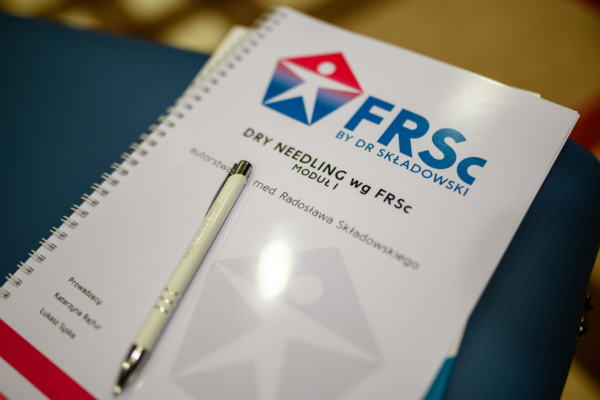
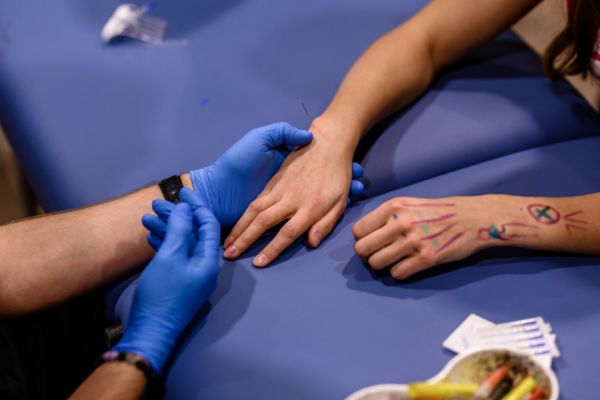
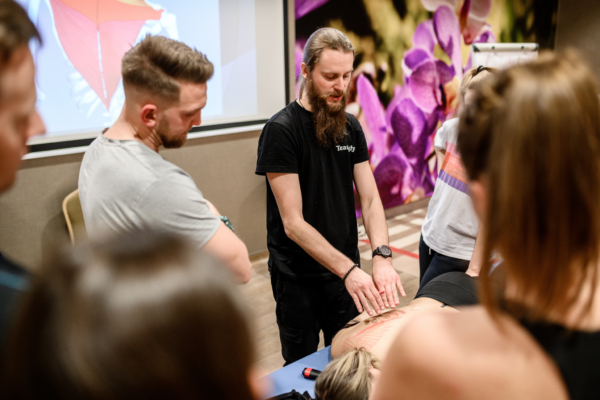


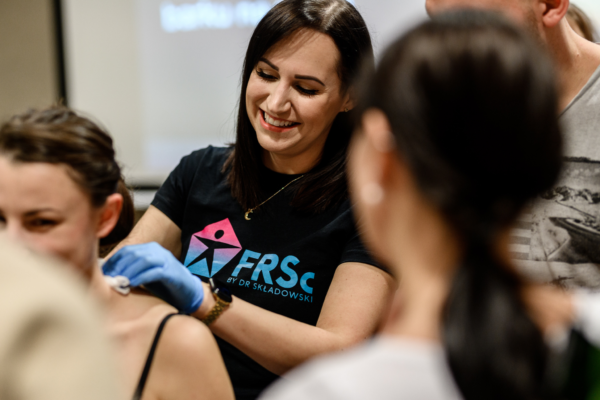
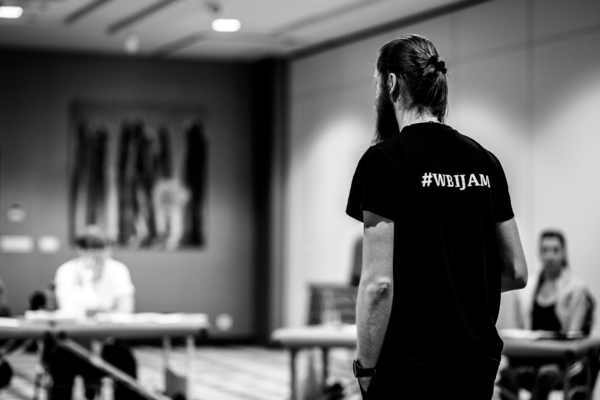
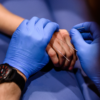
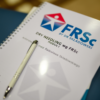
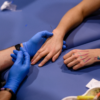
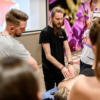

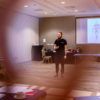

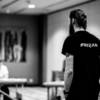
DRY NEEDLING by FRSc – Module I
2 450,00 zł
Dry needling by FRSc is an innovative Polish dry needling method based on Radoslaw Składowski's concept.
27 godzin
hours
45 educational
points
Place:
Spała / Big Cities
Funding
KFS / BUR
Dry needling
The basis of the Dry Needling method lies in FRSc, a concept created by an orthopedic doctor Radosław Składowski, which logically distinguishes and differentiates several repetitive pathomechanisms that cause diseases, limitations and pain. In its procedure, FRSc assumes finding the root causes of the problem with which the patient comes to us, and therapy aimed not at the symptoms, but at the direct cause of these.
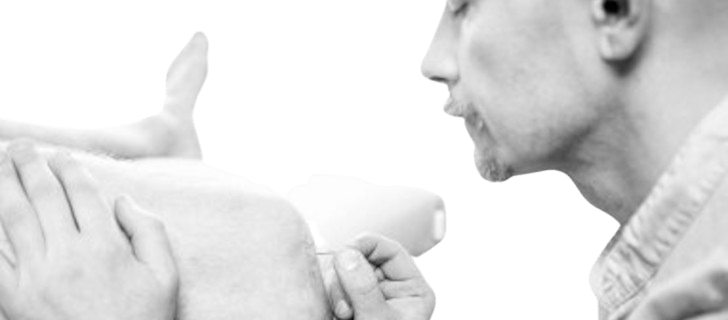
What makes our course different?
- we introduce you to the world of FRSc, interspersing the lecture with a practical part, which will allow you to understand the assumptions of the method and facilitate work in the office from the first day after returning from the course,
- we don't just teach you to prick - this course teaches you to think and look for the causes of disorders, and not just stick needles into painful places,
- we work on locations that are completely unjustly omitted in needle therapy by many (e.g. meniscus, symphysis disc and many others), because they are often the cause of the ailments with which the patient comes to us,
- wherever we can use a manual technique instead of a needle - you will get it from us, even though it goes beyond the dry needling course program,
- we put a lot of emphasis on various "lifehacks" - we share our experiences on how to work safely, effectively and without complications (and if any appear, how to deal with them),
- The course consists of two modules:
- the first discusses FRSc theory with practical references and hands-on learning of basic applications,
- you can do the second module after gaining experience and getting used to it, and you will learn advanced application techniques
Na szkolenie zapraszamy studentów fizjoterapii i przedstawicieli zawodów medycznych: lekarz, lekarz dentysta, fizjoterapeuta, pielęgniarka, położna, ratownik medyczny, technik masażysta, osteopata, technik ortopeda.
Do you work in another medical profession? Contact us!
Contraindications
- significant, uncorrectable vision defects
- impaired motor coordination (the course requires high precision)
If you have a disability declaration, we recommend an individual consultation. In case of any other doubts too.
09:00 – 09:45
Opening, discussion of organizational issues, introduction of Participants and Instructors
09:45 – 10:30
Introduction to dry needling
Contraindications
Procedure in emergency situations
10:30 – 10:45
Break
10:45 – 11:30
OHS of dry needling treatments
11:30 – 12:15
The first puncture - theoretical discussion, principles of needle application, practical exercises
12:15 – 12:30
Break
12:30 – 13:15
Discussion of the first regulator
13:15 – 14:00
Discussion of the application on the shoulder collar beams and the "tongue of attention", demonstration, practical exercises
14:00 – 15:00
Break
15:00 – 15:45
Discussion of the second regulator
15:45 – 16:30
Discussion of the pectoralis major myogelosis and brachial plexus neurocompartment application, demonstration, practical exercises
16:30 – 16:45
Break
16:45 – 17:30
Discussion of the third regulator
Demonstration of practical work with disorders of the 3rd regulator - lipodynias
17:30 – 18:15
Omówienie IV i V regulatora
18:15 – 19:00
Pytania od Uczestników i podsumowanie
09:00 – 09:45
Overview of applications within the hand: elbow-carpal disc, vice-lister, vice-guyon, collar beam between the first and second metacarpals, "Wolverine", demonstration, practical exercises
09:45 – 10:30
Discussion of the typology of patients. Summary of the theoretical part.
10:30 – 10:45
Break
10:45 – 11:30
Discussion of the collar beam application between the levator scapulae and the trapezius muscle and myogelosis of the semispinous muscle of the head, demonstration, practical exercises
11:30 – 12:15
Discussion of the set of applications for the infraspinatus (myogeloses, mayflies, belly-tendon transition), demonstration, practical exercises
12:15 – 12:30
Break
12:30 – 13:15
Discussion of the application for the belly-tendon transition of the supraspinatus, demonstration, practical exercises
13:15 – 14:00
Discussion of the technique of eliminating postoperative ailments, demonstration, practical exercises
Discussion of the mobilization of the acromioclavicular joint, demonstration, practical exercises
14:00 – 15:00
Break
15:00 – 15:45
Omówienie aplikacji na miogelozy m. czworobocznego, neurokompartment nerwu dodatkowego oraz miogelozę m. najszerszego grzebietu, pokaz, ćwiczenia praktyczne
15:45 – 16:30
Discussion of the application to the triceps brachii, (neurocompartment of the radial nerve, golfers and tenis elbow) and the collar beam between the brachial and brachioradial muscles, demonstration, practical exercises
16:30 – 16:45
Break
16:45 – 17:30
Discussion of the application for moguls and clamps of the Th and L-S section, demonstration, practical exercises
17:30 – 18:15
Discussion of the application in the area of the buttock: superior gluteus neurocompartment, myogelosis of the gluteus maximus and medius, piriformis myogelosis, myogelosis of the tensor fascia lata, neurocompartment of the cutaneous nerves of the buttock, demonstration, practical exercises
18:15 – 19:00
Summary, question time
09:00 – 09:45
Przypomnienie najważniejszych wiadomości i czas na pytania od uczestników
09:45 – 10:30
Overview of medial, lateral and posterior thigh applications
10:30 – 10:45
Break
10:45 – 11:30
Discussion of the application for the "runner's knee", demonstration, practical exercises
11:30 – 12:15
Discussion of the application on shin collar beams and "GastroSol", demonstration, practical exercises
12:15 – 12:30
Break
12:30 – 13:15
Omówienie aplikacji w obrębie stopy – metatarsalgie oraz ostroga piętowa, pokaz, ćwiczenia praktyczne
13:15 – 14:00
Omówienie aplikacji w obrębie stopy – więzozrost piszczelowo-strzałkowy tylny, więzadło ATFL, więzadła antysupinacyjne i antypronacyjne, „nadguzia”, pokaz, ćwiczenia praktyczne
14:00 – 14:45
Discussion of the scar application, demonstration
14:45 – 15:00
PODSUMOWANIE I ZAKOŃCZENIE KURSU

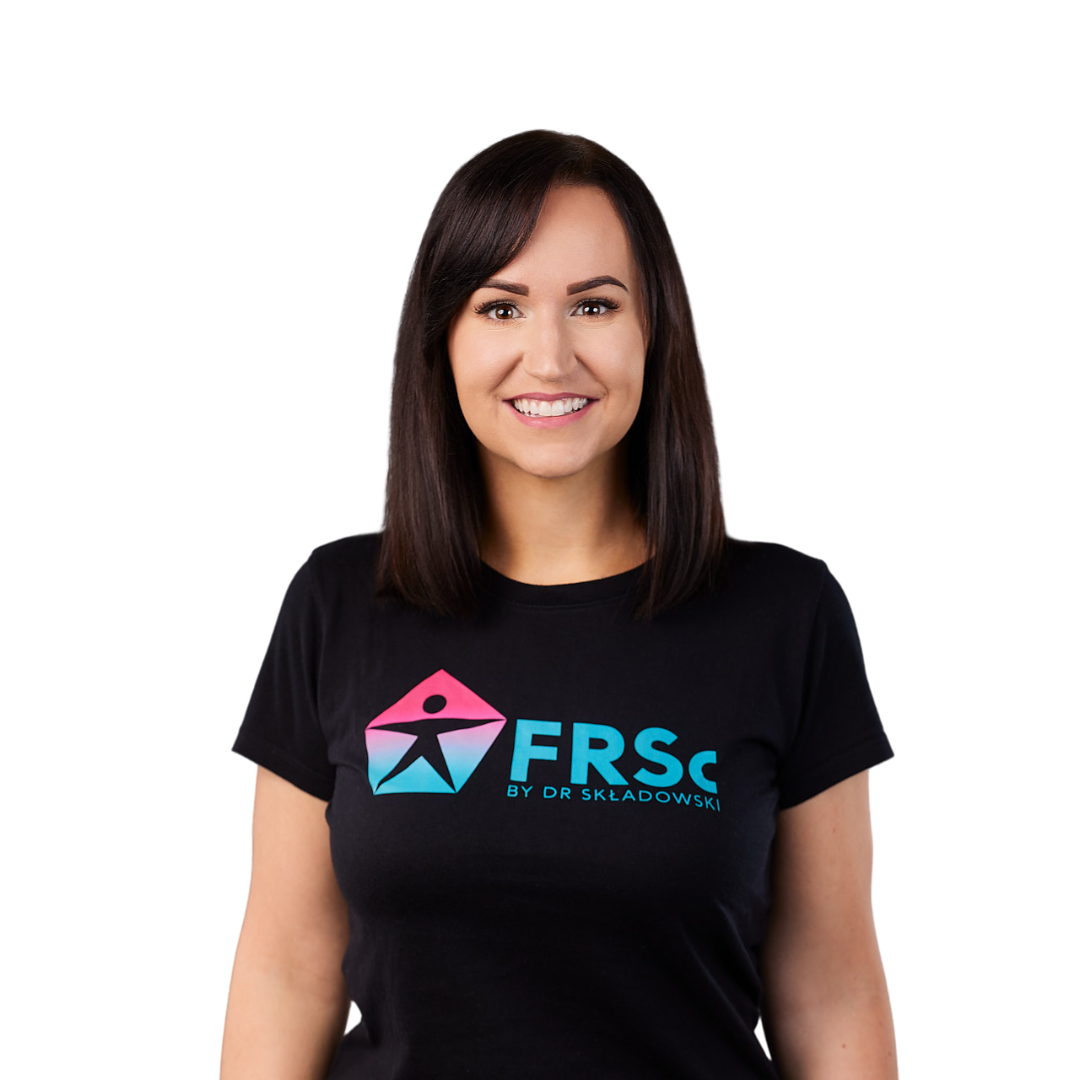
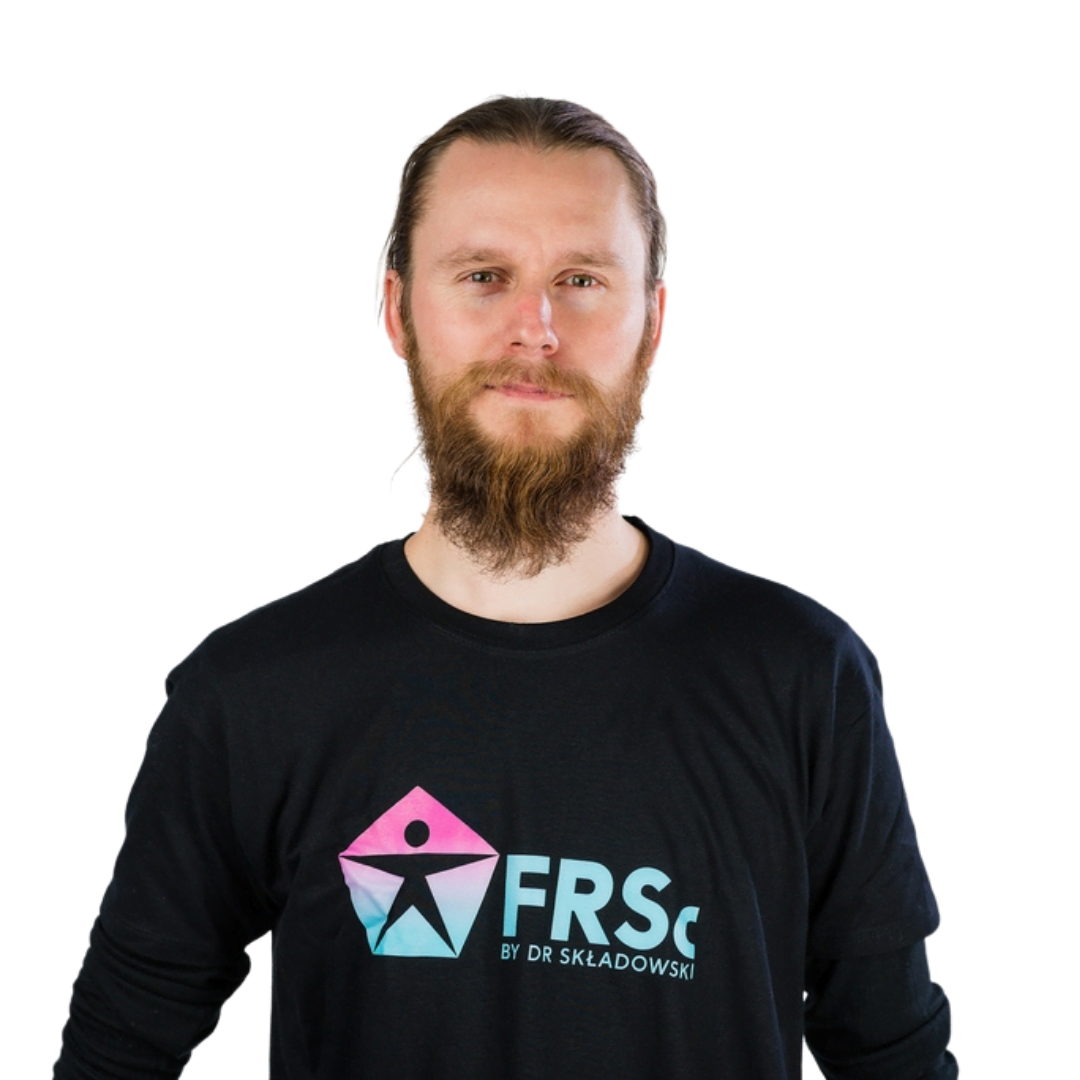
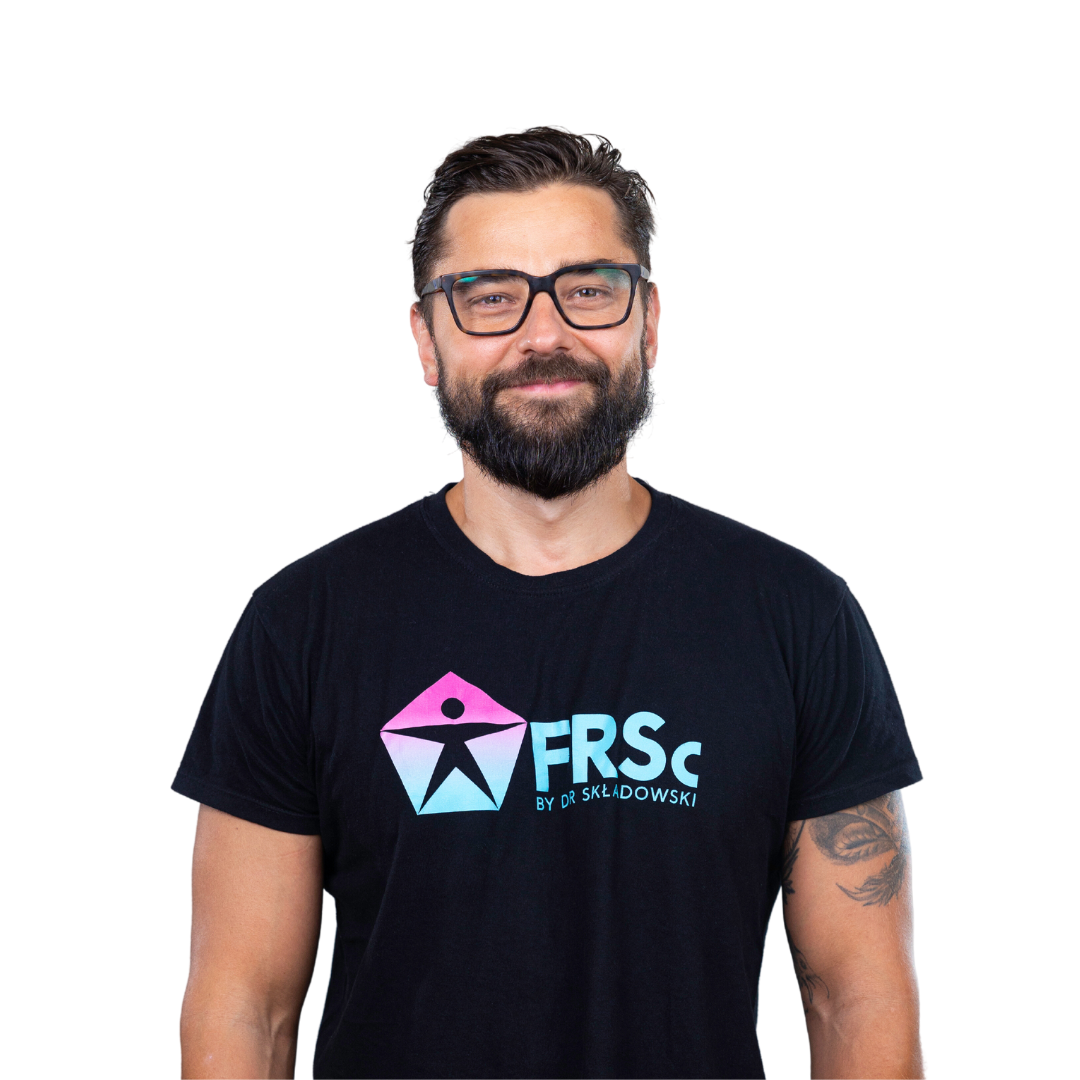


Radek –
Polecam gorąco mega dawka wiedzy , ogrom materiału który można wykorzystać w swoim gabinecie i praktyce . Grazie mille 🫶
Bomba –
Bardzo dobre szkolenie w luźnej atmosferze, z odpowiednim skupieniem na wymagających tego instruktarzach.
Gelato świetny, Cioccolato świetny 🤩
Ottimo allenamento in un’atmosfera rilassata, con un’adeguata attenzione agli istruttori esigenti.
Ottimo il Gelato, ottimo il Cioccolato 🤩
Kuba –
Super kurs z dużą ilością przydatnych wiadomości, które świetnie zwiększają wachlarz możliwości fizjoterapeuty. Team Gelato Chocolato 🔝